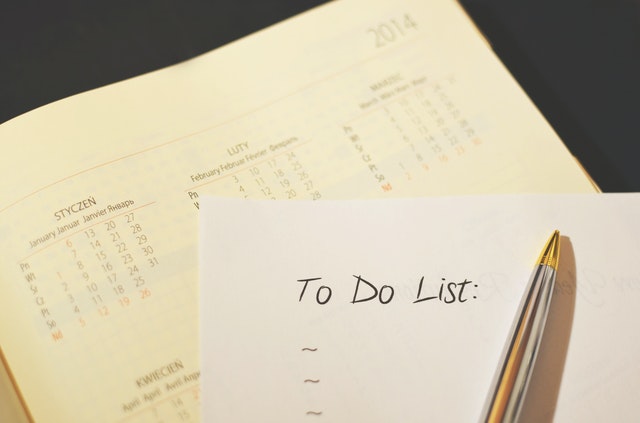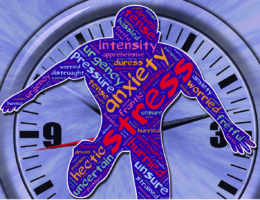Proactiveness is a word that can describe someone who goes into the world with their eyes open, looking for opportunities. Proactivity is one of the most important skills in life because it increases your ability to take advantage of opportunities as they arise and make things happen. The proactive person looks at life like an adventure full of possibilities. They are willing to jump in without worrying about what might happen or how it will work out. This blog post will share some awesome proactiveness tips you can use to increase your productivity!
What is Proactiveness?
Proactiveness is a lot more than just getting things done. Wondering what proactiveness means? It’s about the proactive mindset and how it can help you be successful in whatever you do.
Proactivity starts with an idea, like coming up with new concepts for your business or spending time brainstorming potential solutions to current problems. As soon as that idea comes into being, proaction kicks in – taking action on the thought so that it becomes a reality. This could mean starting a project plan or implementing changes at work based on your ideas. If this sounds like something you want to do, then read on!
How to increase productivity?
Increasing proactiveness and productivity are often one of the most talked-about subjects. There is no shortage of advice for increasing your proactiveness, but sometimes it can feel overwhelming. Where do you start? What should I change first? The answer depends on what type of person you are or where in life you find yourself. If that’s not clear enough, here are some general tips:
- Determine which area needs work (You may need more sleep or a better diet)
- Start with one small goal at a time – make sure it aligns with who you want to be, i.e., if someone wants to be more active, they might set an exercise goal like going for a 30 minute.
Proactive people are more likely to be successful – here’s why
Some statistics show that proactive people are more likely to be successful, and studies show that proactiveness is a learned behavior.
One study showed an increase in people’s ability to take the initiative as they progressed through the workbook. Another study found that proactive managers were more likely to have engagement levels for their teams above 50%.
As you can see from these statistics, being proactive does not just help your company – it helps you individually! Here are some of my favorite tips on how we can get better at proactivity:
- Set goals and deadlines for yourself before starting any project or task.
- Try taking action even if you don’t know what will happen when you follow your plans.
- Keep track of everything, so there is less risk.
Identify your goals and focus on the tasks to get there

You must identify your goals and focus on the tasks to get there. When you’re proactively pursuing a goal, you’ll be more productive because it feels easier, and your motivation is higher.
When working towards achieving something new or when going after an ambitious project that will take time, energy, concentration, input from other people, etc., don’t forget about achievable shorter-term objectives: these are all stepping stones for reaching overarching aims which can seem too far off at times, but they needn’t feel unattainable if broken down into smaller steps every day.
If any of them doesn’t work out properly, you’ll be much better off if you view it as a learning experience rather than something that has failed.
When we proactively set ourselves goals and work towards them, we’re less likely to get stuck in ruts of self-doubt or negativity: this is because while there will always be obstacles (which are growth opportunities), we’ll see the goal itself as an actual achievable thing, not an abstract concept.
In any relationship – whether with colleagues, friends, or family – try to be proactive and make an effort to reach out first. This doesn’t just mean where they live either: when people take the initiative themselves without being asked by others for help on tasks, advice, etc., their relationships feel stronger and healthier too.
Set a time limit for each task

It’s important to give yourself a time limit for each task, such as 45 minutes or an hour. This will help you stay more proactively productive in the long run because it can be difficult when projects continue over months and years without seeing any end goal. With short-term goals with set deadlines, this might not happen!
- Have a timer going that has a designated amount of time – try 45 minutes or 60 minutes
- Set goals for tasks before starting them, so they know what needs to be accomplished within the time frame
- When working on something, start by finishing the most pressing thing first.
- Maintain breaks every 30/60 mins (depending on how much work is being done)
Be proactive about getting started – don’t wait until you’re in the mood!
To achieve some, you must do something now. Please start with the easiest first step and keep going, don’t wait to feel like it or be in a perfect environment.
Don’t put off your homework until you’re more motivated: just get started on whatever is due tomorrow!
Identify what needs to happen next and do that next thing right away – even if you have nothing else left to do but sit around waiting for inspiration, just sitting there is not proactiveness. Anything can seem difficult at first, but taking action creates momentum to make the task easier later on.
Use reminders to stay on track with deadlines or other important dates
One of the best ways to stay proactive and on top of deadlines is by using reminders. One way to do this is through the use of an app like Todoist, which allows you to make a list of all your overdue tasks, set due dates for them, and then get notifications reminding you of the said task when they’re about to be due.
Another great option that many people are starting to explore regarding productivity is the Pomodoro technique–which involves working on one thing at a time without distractions or interruption until it’s done before taking short breaks during each session. This may sound overwhelming, but once someone gets used to doing it, there can be major benefits, including improved concentration because we constantly have our focus drawn back into what we need right now.
Take a break

When you are fed up with your work, you may want to take a break. A way of taking a break is by looking at something that has nothing to do with your work, but this will not only make us feel refreshed and relaxed, but it will also give our brain some time to reorganize its thoughts.
A short walk in the park or even just sitting down for five minutes can help as well. However, don’t spend too long on breaks because they won’t be very productive if done incorrectly – so try no more than ten-minute breaks every hour or so.
Use the Pomodoro technique to get more done in less time
By using the Pomodoro technique, you can get more done in less time. The Pomodoro technique is where a person sets the timer for 25 minutes and then works until it goes off, take a break for five minutes. Repeat this process as many times as needed to complete your task or project.
- Set the alarm on your phone so that when it rings at every interval of 25 minutes (for example), you know it’s time to start working again.
- Use the Pomodoro technique by setting up intervals of 20-25 min where you are only allowed to be productive during these intervals with breaks in between each one.
The goal should not be finishing tasks quickly but rather ensuring that we stay focused without burning out too early.
Create a “to-do” list for each day and week
A well-planned “To-do” list will not only help you prioritize your tasks but will also provide an easy-to-follow checklist for the day. The important thing is to plan and keep a consistent “To-do” list that includes specific items with deadlines, due dates, priorities, and so on. Remembering what needs to be done can be difficult when many things are competing for attention at any given time.
Provide yourself enough space on each line of the “to-do” list. Keeping this in mind will make everything easier as you won’t have to do too much scrolling or flipping pages back and forth between sheets looking for something important that was lost amidst other papers on your desk.
Prioritize your tasks by importance, not urgency
To increase productivity, you must prioritize your tasks by importance, not urgency. When you prioritize by urgency, you will be so focused on the due tasks that it will hurt your productivity because there is no time for anything else. When you prioritize by importance, every task gets its fair share of attention, and what’s urgent doesn’t matter as much compared to other important items. Of course, this can work in reverse. Focusing only on what’s important leaves everything else undone, but prioritizing according to both criteria means every task has a chance of being completed, leading to an increase in productivity levels.
Get enough sleep every night so you can be at your best during the day

A sound sleep of around eight hours a night is necessary for proactiveness. Not only will you be more refreshed after waking up, but your brain will function better, and it’ll be easier to get things done throughout the day. So for the proactiveness:
- Get enough sleep every night so you can be at your best during the day
- Don’t drink coffee after lunch, as caffeine has a short half-life and will make it difficult to fall asleep
Avoid drinking any caffeinated drinks in the evening. Aim for having no more than one cup of coffee (or tea) per day – even better if that’s not until noontime when we’re most proactively awake. Drink decaffeinated beverages or herbal teas before bedtime instead. Coffee is a stimulant and may cause insomnia by disrupting sleep patterns that are already off-balance because of work demands or overscheduling.
Be specific about what you’re going to do.
A specific goal can help you be proactively productive.
- Brainstorm some goals and write them down to reference later in the day
- Prioritize your list of goals based on what you feel most energized about or where you have an opportunity for a high return on investment
- Identify which tasks can be completed quickly, with low effort, or that don’t require much preparation (e.g., calling someone) so you’re not bogged down by those when they come up during the day.
Set deadlines for when tasks should be completed by
Deadline maintenance is the most important thing to help proactiveness. Deadlines are essential to any project or task, and it is even more important for proactivity because, without them, a person will not have the drive needed to finish their tasks on time.
Setting deadlines at the beginning of each day is a great way to ensure that you complete your assignments quickly and efficiently. If there was no deadline, then people might put off completing their work until later, when they may be too exhausted from doing everything else during the day. It’s also best if these deadlines are set ahead of time so as soon as someone wakes up, they can get started right away instead of waiting another minute before getting an assignment done for today (or tomorrow).
Create an environment that is conducive to productivity
The first and foremost condition for proactiveness is an environment that promotes productivity. If you are surrounded by distractions and feel overwhelmed, this will create a situation where it becomes difficult to take the initiative.
The first step for creating such an environment is eliminating all potential distractions from your surroundings: Turn off email notifications on your phone or computer; put away any other electronics that might distract you when working (unless they’re being used as part of the task); close out of social media accounts so that nothing can pop up in front of your face while you work; turn off Tv shows or movies if they happen to be playing nearby.
Bottom Line,
When you’re proactive, you are more likely to be successful. There are many ways that we can help increase your productivity and proactiveness levels through our various programs – from creating a “to-do” list for each day or week to set time limits on tasks, so they don’t take up too much of your time. We also offer the Pomodoro technique, which is an easy way to get more done in less time by taking short breaks every 25 minutes or working with a timer. Of course, one key component is being proactive about getting started! Please don’t wait until you feel like it before starting any task; instead, identify what needs to be accomplished and focus on those specific actions.



